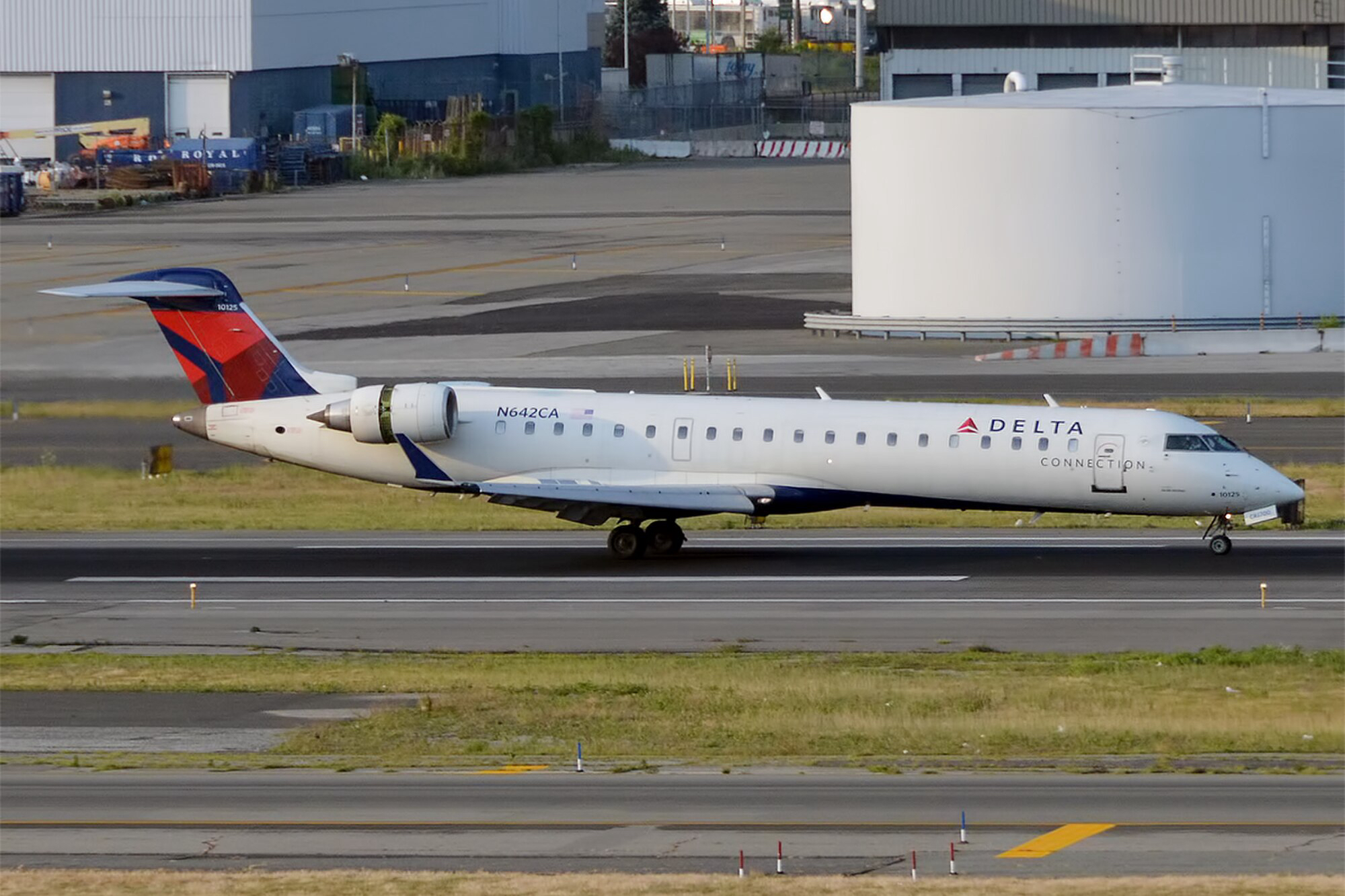Flight UA-4491 | Registration: N563GJ
Date: 31 March 2025 | Location: Enroute to Columbia, SC (USA)
Introduction
On 31 March 2025, a GoJet Airlines Canadair Regional Jet CRJ-550, operating on behalf of United Express, experienced a sudden and unexpected loss of cabin pressure while cruising at FL350 enroute from Chicago O’Hare International Airport (ORD) to Columbia Metropolitan Airport (CAE), South Carolina. The aircraft, registration N563GJ, was performing flight UA-4491 and carrying passengers and crew.
The incident occurred approximately 240 nautical miles northwest of Columbia, prompting the flight crew to initiate an emergency descent to 10,000 feet. The descent was performed at an average rate of approximately 4,100 feet per minute. The flight continued without further incident and landed safely on Columbia’s runway 23 about 45 minutes after the initial pressurisation failure.
Flight Details
• Aircraft Type: Bombardier CRJ-550 (CRJ-700 variant)
• Engines: 2 × General Electric CF34-8C5B1
• Operator: GoJet Airlines (operating as United Express)
• Tail Number: N563GJ
• Flight Number: UA-4491
• Route: Chicago O’Hare (ORD) to Columbia (CAE)
• Date of Incident: 31 March 2025
• Phase of Flight: Cruise at FL350
• Occupants: Approximately 50 (not officially confirmed)
• Incident Location: ~240nm NW of Columbia, enroute airspace
• Time to Landing After Incident: ~45 minutes
Sequence of Events
Cruise and Pressurisation Failure
While cruising at FL350 over Tennessee or North Carolina airspace, the crew received warnings indicating a pressurisation system fault. Cabin altitude began rising rapidly, breaching safety limits and causing passenger oxygen masks to deploy automatically.
Emergency Descent
The flight crew declared an emergency and commenced a rapid descent to 10,000 feet to ensure a breathable atmosphere for passengers and crew. The descent rate averaged approximately 4,100 feet per minute, consistent with standard emergency descent procedures. ATC provided vectors and altitude clearance to expedite the descent.
Smoke Reported in Cabin
According to passenger accounts, oxygen masks were deployed throughout the cabin, and light smoke became visible shortly after the pressurisation loss. The source is presumed to be the oxygen generators housed in the PSU (Passenger Service Units), which can emit heat and odour during activation. The smoke was reported to dissipate prior to landing.
Landing
The flight continued at 10,000 feet and landed without further incident on runway 23 at Columbia Metropolitan Airport (CAE). Emergency services were on standby but not required for intervention. Passengers disembarked normally at the gate.
Technical & Operational Analysis
Cabin Pressurisation Systems
The CRJ-550 pressurisation system is designed to maintain a cabin altitude well below the external altitude at cruise. Any failure of outflow valves, pressurisation controllers, or pressure vessel integrity can lead to rapid decompression. In such cases, immediate descent is mandated by procedure.
Oxygen Generator Activation
Passenger oxygen masks are linked to chemical oxygen generators, which produce breathable oxygen through an exothermic reaction. The slight burning odour and residual smoke reported are consistent with generator activation and not indicative of fire or additional system failure.
Possible Causes
While the exact cause remains under investigation, potential factors include:
• Malfunction of automatic pressurisation controller
• Faulty outflow valve or seal leak
• Sensor error causing a false trigger
• Structural issue affecting pressure retention
Post-flight maintenance will include inspection of the pressurisation system components, review of cabin altitude logs, and analysis of system fault codes retrieved from the aircraft’s Central Maintenance Computer (CMC).
Airline and Safety Response
GoJet Airlines and United Express have acknowledged the event and are conducting a thorough internal investigation in coordination with the FAA. The aircraft remains grounded pending detailed inspection and corrective maintenance actions.
The FAA will also assess compliance with emergency procedures and crew actions during the descent.
No injuries were reported, and the crew’s response was in full accordance with standard emergency protocol.
Summary & Safety Outlook
The incident underscores the critical importance of cabin pressurisation systems in high-altitude commercial flight. Prompt action by the flight crew to descend and stabilise cabin conditions ensured passenger safety throughout. The appearance of smoke, while alarming to passengers, was consistent with the normal operation of chemical oxygen systems and did not pose further risk.
A full mechanical evaluation of the aircraft’s pressurisation control system is ongoing, and the aircraft will remain out of service until cleared by maintenance.
Disclaimer
This article is based on publicly available information and reports as of 2 April 2025. While every effort has been made to ensure accuracy, we cannot guarantee the completeness of the information provided. If you are the rightful owner of any referenced content and wish it to be removed, please contact takedown@cockpitking.com.
